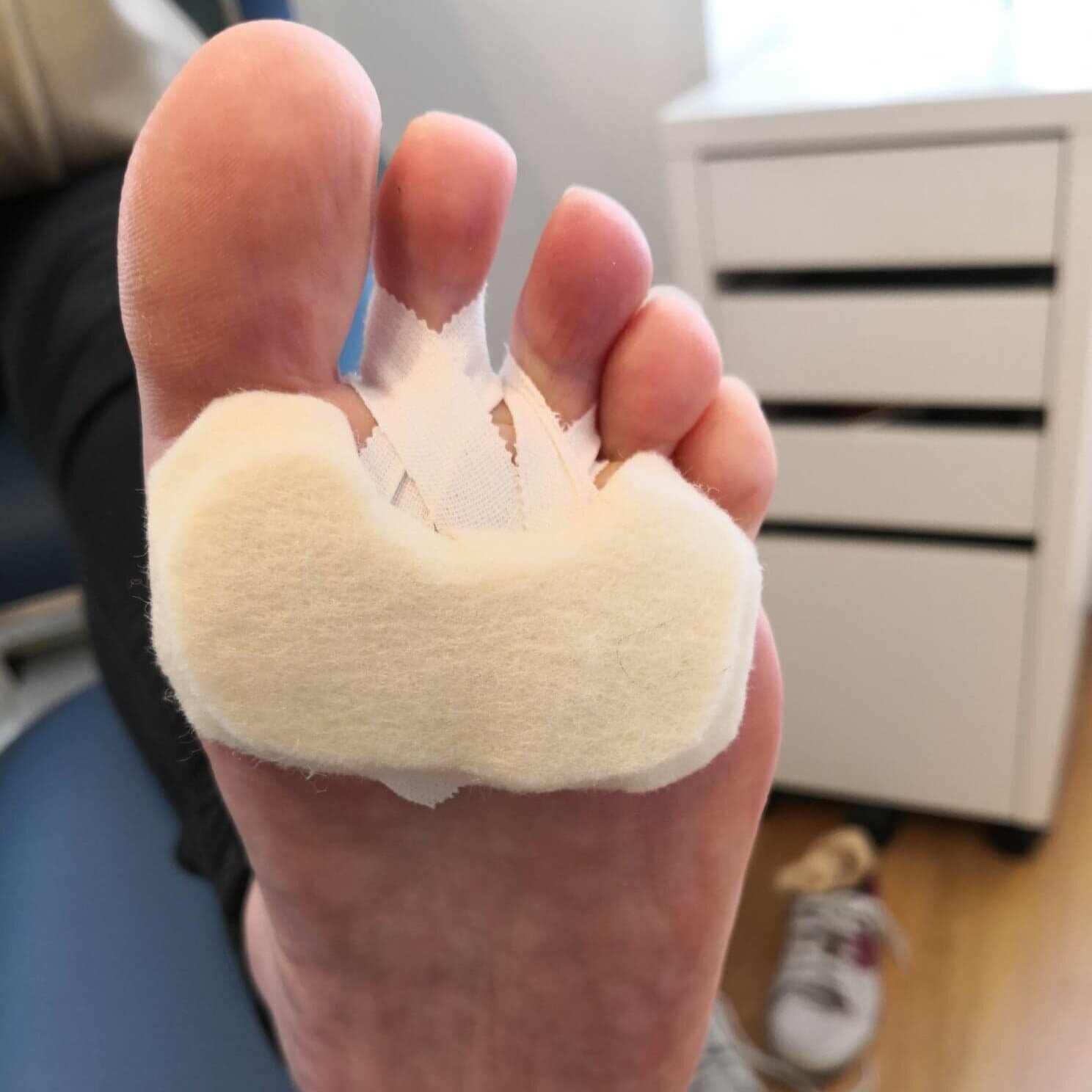Plantar Plate Injury
The Highlights
Plantar plate injuries involve damage to the small ligaments connecting your toes to the ball of the foot, often causing pain and the sensation of walking on a pebble.
Our team can diagnose this problem through physical examination and ultrasound.
Treatments include footwear advice, taping, foot orthoses (specialist insoles) and exercises to strengthen toe muscles.
What is it and what are the symptoms?
Plantar plates are small ligaments on the sole of your foot that connect the ball of your foot to the base of your toes. They play an important role in stabilizing the toes and preventing excessive bending (in turn protecting the joints) as we propel forward. Damage to these ligaments is very common in our clinical experience but extremely under-diagnosed by many other healthcare professionals.
Plantar plate injuries will often result in pain on the ball of the foot when weightbearing which feels like walking on a pebble. There may also be swelling over the painful site, sometimes including the whole joint above it (capsulitis). Symptoms tend to progress slowly over time but it is possible (especially in sports people) to have sudden traumatic injury to this structure.
Why does it happen?
Plantar Plate Injuries are usually overload injuries - in essence, the amount of mechanical load or stress the ligament can take on a daily basis has been exceeded too many times for it to keep up with healing and adapting. This sometimes follows a clear "spike" in load - a sudden increase in walking or running mileage, a change in profession (those on their feet a lot for work are particularly prone to this condition), a change in shoes and weight-gain can all play an important role. Sometimes however the onset has been more gradual.
We also know that certain other factors may increase the loads on the plantar plate ligament and increase the likelihood of injuries. These include mechanical factors like limited ankle range of motion and big toe issues like Hallux Limitus (stiff big toes) and Hallux Abductovalgus. Inappropriate footwear is also a really important factor; bendy/flexible shoes are bad news for this problem as are high heels.
What are the treatment options?
Prior to carrying out any treatment plan, our Podiatrists carry out a medical history taking and physical examination of your feet, ankles and lower limbs as necessary. We may also recommend further examination such as gait analysis or diagnostic ultrasound imaging - both of which are available in-house.
We are the first and only Podiatry clinic in the Scottish Borders (NHS or Private) to offer diagnostic ultrasound and for this condition it is particularly useful for determining this is the injured structure versus some common neighbouring problems like capsulitis, osteoarthritis, fat pad contusion and Morton's neuroma. Right diagnosis = faster, better treatment.
Plantar plate treatment depends on it's severity; it is a ligament we can see rupture which can only be fixed surgically. However, most patients in pain will visit us well before this point and lower grade damage or even partial tears can be treated very well in our clinic.
Reducing the painful upward bend motion of the toe is key to reduce stress on the ligament; we achieve this through footwear advice (stiff-soled shoes are essential), taping techniques, padding and foot orthoses (specialised insoles) which we can design to manipulate the mechanics around the toe.
We will also recommend exercises to strengthen the muscles which support the toe and in the very common case of neighbouring tissues also being injured, we will seek to address these too, for example corticosteroid injections for toe joint or nerve complaints.




